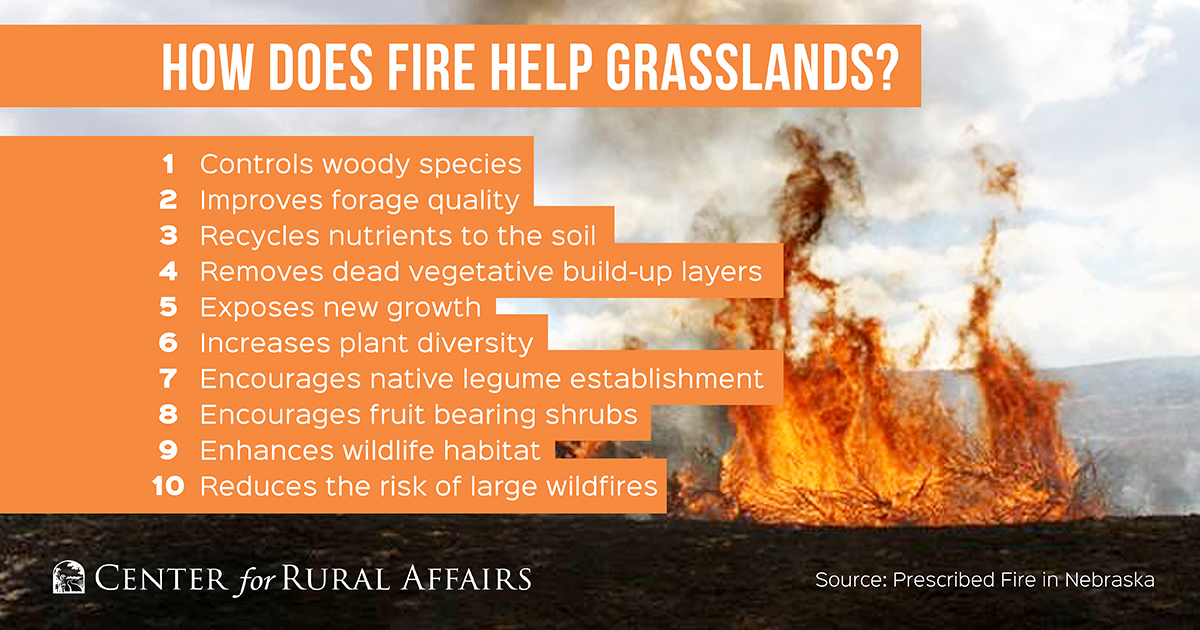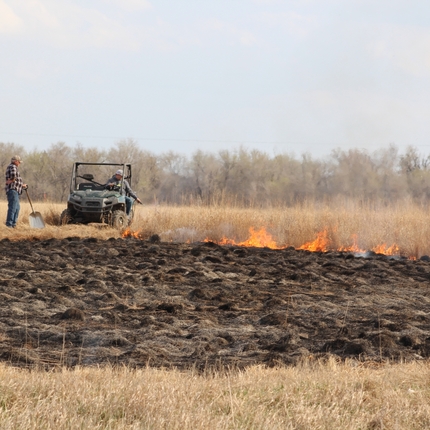I wanted to learn more about the practice of prescribed burn (sometimes referred to as controlled burn) as it relates to our work with women farmer and landowner learning circles.
So, I caught up with Karen Rathje, a learning circle participant from our series.
Karen owns land in Nance County, and read about the conservation learning circle for women farmers and landowners in the paper. She cash rents her ground – the original plot has been owned by her family for 104 years.
I asked Karen why she joined the learning circle. She marveled at how traditional practices, like burning, were becoming new again, and felt the knowledge she gained from the circle would help her have better conversations about conservation practices with her renter.
“The big thing for me is to take care of the land properly,” she said. “The cost of improvement and implementing practices is worth it to increase profitability.”
Historical records suggest that until the turn of the 20th century, grasslands in the Great Plains were typically exposed to fire every 1 to 10 years, initiated by lightning strikes, Native Americans, and early settlers. Fire is a natural disturbance that shapes many ecosystems, and, when applied under the right conditions, can improve rangeland conditions, enhance native plant community in prairie lands, increase agriculture production, and improve wildlife habitat.
I visited with Ben Wheeler, Nebraska Natural Resource Conservation Service (NRCS) coordinating wildlife biologist at Pheasants Forever and Quail Forever in Ord, Nebraska. Wheeler worked with the Center on the learning circle near the Nebraska Sandhills.
According to Wheeler, the three most common reasons for using prescribed fire in this part of the country are 1) to control invasive eastern red cedar, which is problematic for both wildlife and livestock; 2) encourage plant diversity for improved forage or wildlife habitat; or 3) Conservation Reserve Program (CRP) mid-contract management.

“We help landowners interested in starting a burn association address logistics that can often be barriers for them, such as the number of people required, the equipment needed for a burn, and how to become proficient,” said Wheeler.
Wheeler’s NRCS team holds public trainings each year to address these barriers. The team also assists landowner burn associations with approximately 12 burns per year and advises on topics beyond fire learning, such as wildlife management and other conservation practices. Once a burn association is formed and proficient, they have access to an NRCS equipment trailer which has all of the equipment needed for a prescribed fire.
Karen and the rest of the circle participants toured a burn site that Wheeler and the local burn association had recently done. They learned what invasive plants had taken over prior to the burn, and how that is beneficial to growing lusher forage and other plants that can be more useful for grazing cattle or attracting natural wildlife to the area.
“By keeping current with conservation practices, I’ll know more about the conditions my renter faces, too,” she said.
To learn more about future women learning circles, contact Sandra at [email protected].
For more information, visit the resources below:
Working with Prescribed Burn Associations - a webinar by USDA NRCS Central National Technology Support Center
How to Perform a Prescribed Burn - a toolkit prepared by Iowa State University Forestry Extension





